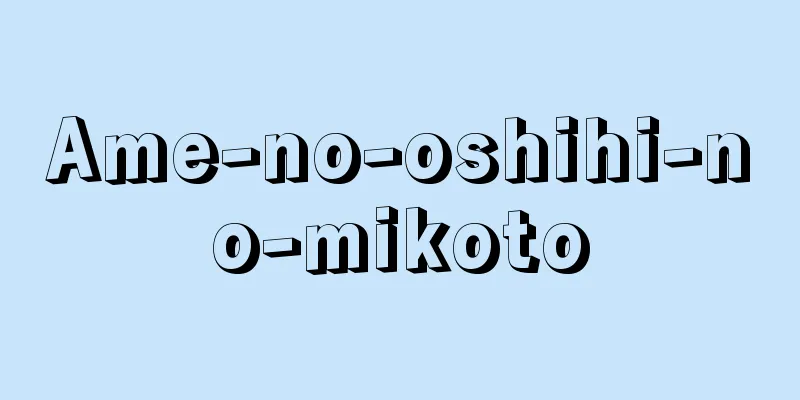hearth - stove

[1] 〘 noun 〙 (meaning "kama (cooktop) place)" ① A stove on which pots and kettles are placed with a fire lit underneath to cook food. It is made of earth, stone, brick, iron, or concrete, is hollow inside, and has a hole on top for placing the pot or kettle. Kama. Kushi. Hettsui. ※Man'yoshu (late 8th century) 5.892 "No fire is blowing from the hearth, and spider webs are growing in the steamer ." ② (using ① as the primary basis of life) Household goods. ※Utsubo (c. 970-999) Fujiwara no Kimi "There should be no one in the world who can live without a hearth, and no one to rely on." ③ A house as a unit of life. A family that lives independently as a family. Also, the unit of family life in the imposition of taxes such as household ratios. Household. In the Edo period, some regions used the hook of a hearth as a unit instead. ※Konjaku (around 1120) 26 "It was passed down to the grandson of that governor, and it is still in the hearth where the thread is placed." ④ (This is used in contrast to "oku" being likened to a person in a high position, as in "The Analects of Confucius - Eight Lies " which says " With three of them , he will be in the innermost place, and will be in the innermost place, and will be in the innermost place.") A person with real power. A person who holds real power. → Fawning to the hearth. ※Reading book, Tsubakisetsu Yumiharizuki (1807-11), continued "Many vassals celebrate this and seek fawning to the hearth ." ⑤ The opening of a quiver where the arrow is inserted. Also written as "Kamado." ※Jyugyo Magi Daigaimonsho (1464) “The root of the Utsubo (cone) is a combination of a sickle and a scale , which is why it is called Utsubo.”⑥ Tenant farmer. [2] [Suffix] Used to count the number of households. Eaves . Houses . When two generations live together in one house, they are counted as two hearths.Sou Sau [Stove]He-tsu-i ...hi [Kitchen]hearth - hi [stove]To [Kamado]Be [Kitchen]Source: The Selected Edition of the Japanese Language Dictionary About the Selected Edition of the Japanese Language Dictionary Information |
[1] 〘名〙 (「かま(竈)ど(処)」の意)① 上に鍋、釜などをかけ、下から火を燃して、物を煮炊きするようにしたもの。土、石、煉瓦(れんが)、鉄、コンクリートなどで築き、中をうつろにし、上に鍋、釜をのせる穴をあける。かま。くど。へっつい。※万葉(8C後)五・八九二「可麻度(カマド)には 火気(ほけ)ふき立てず 甑(こしき)には 蜘蛛の巣かきて」② (①を生活の第一のよりどころとして) 家財。※宇津保(970‐999頃)藤原の君「世界にふせうととのはず、家かまどなくして、たよりなからん人」③ 生活の単位としての家。独立して家庭生活をする一家。また、戸数割りなどの賦課における家族生活の単位。世帯。江戸時代、これの代わりに炉の自在鉤(かぎ)を単位とする地方もあった。※今昔(1120頃か)二六「其(その)郡司が孫(そん)なむ伝へて、今(いまに)其糸奉る竈戸(かまど)にては有なる」④ (「論語‐八佾」の「与三其媚二於奥一寧媚二於竈一」により、「奥」を高い地位にある者にたとえるのに対していう) 実力のある者。実際の権力を握っている者。→かまどに媚(こ)ぶ。※読本・椿説弓張月(1807‐11)続「侫人はこれを祝して、媚をその竈(カマド)に求るも多かり」⑤ 靫(うつぼ)の、矢を入れる口のあたり。「蒲戸」とも書く。※就弓馬儀大概聞書(1464)「うつぼの根本(こんぼん)は、かまと計(ばかり)をうつぼとて付けたる也」⑥ 小作人。[2] 〘接尾〙 戸数を数えるのに用いる。軒(けん)。戸(こ)。一家に二世帯同居する場合、二竈と数える。
そう サウ【竈】へ‐つ‐い ‥ひ【竈】へっ‐つ‐い ‥ひ【竈】へ【竈】べ【竈】出典 精選版 日本国語大辞典精選版 日本国語大辞典について 情報 |
Recommend
Prince Shu - Prince Shu
A member of the imperial family at the end of the ...
Metal Paint - Kinzokutoso
...The necessary items when planning a painting d...
Gakusho betto - Gakusho no betto
...A place for studying Tang music and music from...
Arad (English spelling)
A town in the northeastern Negev region of souther...
Prince - Suemiko
〘 noun 〙 The son of an emperor. Prince. ※ Chronicl...
Ottotail le Roman - Ottotail le Roman
…Their work consisted of creating, developing pla...
Mr. Miyoshi
A clan known as a scholar in ancient and medieval...
Manaos
…It is an important transshipment port for river ...
Ichikawa Nine Girls and Eight Girls
A female actress of the Meiji period. Her real na...
Ulfila
Visigothic bishop. Also known as Ulphilas. Born in...
Chimaki (Chimaki) - Chimaki
A type of mochi made by kneading rice flour or glu...
Federal Aviation Administration
…the abbreviation for Federal Aviation Administra...
Shigenari Kimura - Shigenari Kimura
A military commander in the Azuchi-Momoyama perio...
Osumi-so
...The first time this site was mentioned as a te...
anemonefish
...A marine fish of the family Pomacentridae, sub...









